
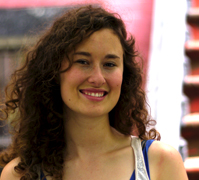 Greenmarket is currently hiring seasonal market managers to manage our 53 Greenmarkets throughout the five boroughs. Click here for the job description, and read below for a first hand account of managing a Greenmarket from former Market Manager, Kathleen Crosby.
Greenmarket is currently hiring seasonal market managers to manage our 53 Greenmarkets throughout the five boroughs. Click here for the job description, and read below for a first hand account of managing a Greenmarket from former Market Manager, Kathleen Crosby.
From the streets of New York, our market manager Kathleen Crosby reports back on a typical day in the life managing the Tompkins Square Greenmarket, which has been transforming a corner of the East Village into a neighborhood center of sustainability every Sunday since 1997.
4:45 a.m.: Alarm goes off. I decide not to hit the snooze button this morning, and disable two other back-up alarms. I make a strong cup of tea and breakfast: Ronnybrook maple yogurt with peaches, bee pollen, chia seeds, and grape nuts.
5:25 a.m.: Carry bike downstairs and head off. It is not light out yet and the Brooklyn roads are empty.
6:05 a.m.: I arrive at the market site, before any of the farmers. Humidity is at about 80% and Tompkins is smelling RIPE.
6:50 a.m.: The first producer of the day, Red Jacket Orchards, arrives at market.
7:20 a.m.: I set up the market info table and tent. The Greenmarket van is filled to the BRIM today with equipment. A 40 pound kettle ball falls out as I open the back door, then work to cram my 10x10 ft. tent into a 7 ft. space between a tree and sign post. Decide on which recipes to display and put out our many pamphlets and handouts. Today we’re featuring tomatoes, so I go grab a bunch of heirlooms for a display.
7:50 a.m.: Harry arrives on the scene. Harry is a long time resident of E. 7th St. and knows all the best spots in the East Village. He usually wears a hat that says "stud" but not today. I'm thinking I should get him a little button that says "Honorary Mayor of Tompkins Square." Each week, Harry helps Jimmy Stannard of Stannard Farms set up and break down, gives breaks to workers throughout the day, and greets people he knows well by howling like a wolf. His friend "Red" walks by. He howls and she howls right back.
9:00 a.m.: Plaster farmers' stands with signage promoting EBT, Health Bucks, frequent shopper promotion signs, plus signs about our upcoming Salsa-off event.
9:15 a.m.: Pam from Ronnybrook feeds me ice cream (it's a tradition we have). Today's flavor is stracciatella.
9:30 a.m.: Do the market report. Today, all the farmers have complied with the rules: on time, farm sign out, price signs out, product labels on honey, meat, eggs, etc; tents weighted down, boxes of produce not sitting directly on the ground, meat, eggs and dairy chilled. Everything is in order. While at Norwich Meadow's stand, one of the Tibetan workers hands me a hot samosa.
10:00 a.m.: Quetsy from Meredith's Bakery needs a bathroom break. I sell a few scones and gluten-free loaves of bread.

10:15 a.m.: Now to work on my a-frame sign. First the letters are too big. Erase. Then too small. Erase. A regular comes up and talks to me for 20 minutes about the history of the East Village. How it has changed!
10:30 a.m.: Finish setting up the info table. Grab some peppers and tomatoes to decorate my stand with. Swiping EBT & Debit/Credit cards and giving out tokens and health bucks. Checking off frequent shopper cards. Try to get more people to sign up for the Salsa-off.
10:45 a.m.: Pam literally spoon-feeds me some of her second batch of ice cream, strawberry this time.
11:15 a.m.: A couple of neighborhood residents who are trying to start a CSA next week approach me about fruit. I introduce him to Jimmy Stannard and they work out prices.

11:30 a.m.: Go pick up some ingredients for the cooking demo. Since we're featuring tomatoes, I grab some ripe juicy ones, a few ears of yellow corn, a bag of okra, and some hot and sweet peppers. All donated by the farmers. Arielle, my helper, chops away. I run to the local Chinese take-out join to pick up a quart of rice to serve the dish. We'll call it...a summer stew.
12:00 p.m.: Do a little social media. Walk around and see what looks good. The sun is hitting Norwich Meadow's beautiful tomatoes just right. Post to instagram, check. Post to twitter, check. Post to facebook, check.
12:30 - 2:00 p.m.: Hand out samples into tiny cups until it's all gone. I think we have some okra converts. The key is slice it thin and toss it in the pan for a few seconds at the very end. Man is it getting hot.

2:10 p.m.: Samples are gone. Now we get to lunch. I'm having some zucchini pasta ribbons with basil, almonds and pecorino.
2:45 p.m.: Harry comes over with an idea. He thinks we should put together a little box of goodies from the market and give it to the owner of the Odessa restaurants across the street. The Odessa Cafe and uber dive-y Odessa Bar have long been fixtures of the EV, but unfortunately Odessa Bar had to close its doors a few days ago. The people at Odessa Cafe have been good to the market over the years letting us use their bathroom and serving up cheap iced coffees. I grab a crate from Jimmy and fill it up with an assortment of produce, bread, pie, and juice from all the vendors. Harry escorts me over and introduces me to the owner. He apparently doesn't come to the restaurant often, so I'm glad to have the opportunity to thank him. He happily accepts.
3:30 p.m.: An indie film location scout approaches us about using farmers' stands in a scene they're shooting in Tompkins Square park.
4:00 p.m.: Look at the salsa-off list and 3 more people have signed up!
4:30 p.m.: Haifa from Norwich Meadows finds out that I don't really eat meat. "You'll have an amino acid deficiency when you get older!" she exclaims, and thrusts some chicken into my hands.
4:45 p.m.: City Harvest arrives on the scene. They double park on 7th. I meet this week’s volunteer and give them some bags to collect unsold produce from farmers to donate to pantries.
5:05 p.m.: The first of Toigo's three trucks arrives from Carroll Gardens, soon followed by their second, much larger truck from Stuytown. Pura Vida packs up a little late, so these two trucks are double parked on 7th. I move my van and Acevedo's small truck so I can fit the smaller Toigo truck in.
5:15 p.m.: Pura Vida leaves but Toigo's big truck can't make that wide turn from 7th onto Ave A because of the City Harvest truck that is still double parked. I ask the CH driver if he can kindly go around the block to let Toigo through. He's cool about it.

5:20 p.m.: All the farmers have packed up for the day except for Meredith's, so now it's my turn. Play van-tetris for a half-hour getting all of the weights, tables, tents, bins, a-frames, racks, and banners in order.
5:50 p.m.: Forgot about the a-frame I have on 1st Ave. Run over and pick it up.
6:00 p.m.: Get a few bags of peaches, plums, and nectarines from Toigo, who are usually the last to leave.
6:10 p.m.: Say my goodbyes and start packing my backpack and bike panniers. Got too much stuff again, have to bungee some squash and peppers on the top of my bike rack.
6:15 p.m.: DANG! Somehow a peach got into my bag of EBT supplies and smashed right up against the keys of my terminal. Classic!








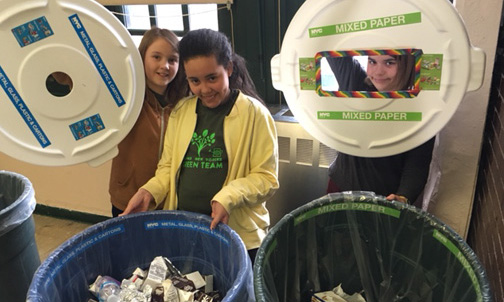
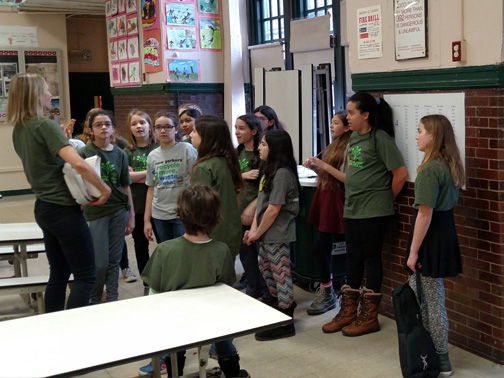
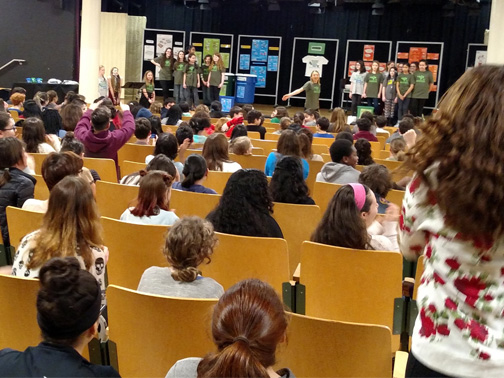

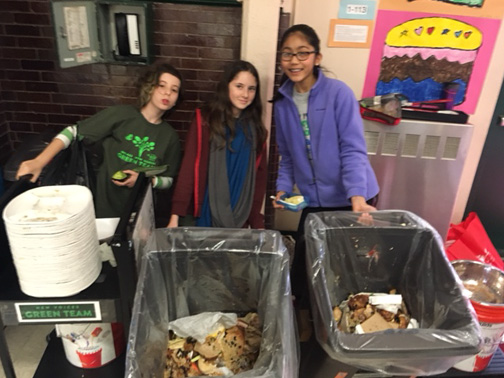



 Greenmarket is currently hiring seasonal market managers to manage our 53 Greenmarkets throughout the five boroughs.
Greenmarket is currently hiring seasonal market managers to manage our 53 Greenmarkets throughout the five boroughs. 





 As part of our end of the year review, we caught up with Mike Rezny, Assistant Director of Open Space Greening at GrowNYC, to talk about the year in urban agriculture, all the new gardens we built, and what's on tap for 2017.
As part of our end of the year review, we caught up with Mike Rezny, Assistant Director of Open Space Greening at GrowNYC, to talk about the year in urban agriculture, all the new gardens we built, and what's on tap for 2017.












